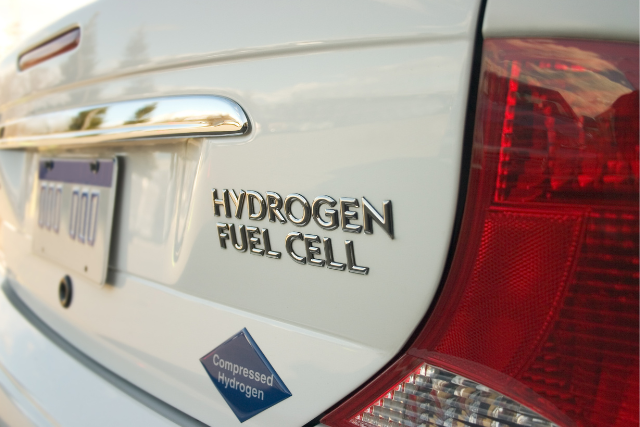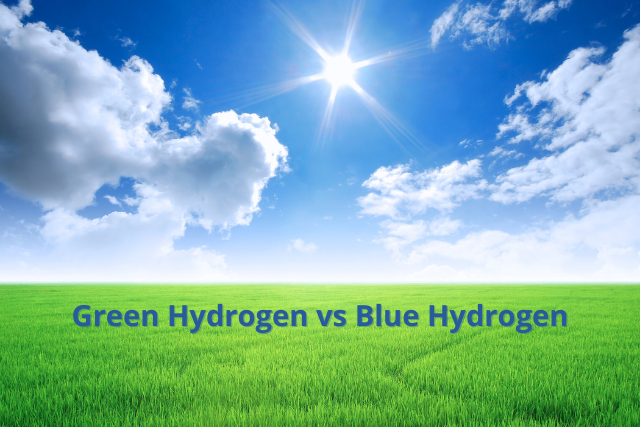Recently, we had the opportunity to collaborate with a client seeking insights into the supplier landscape for rectifiers used in the production of green hydrogen.
Recognizing the increasing importance of sustainable energy and the prevailing confusion surrounding green hydrogen vs blue hydrogen, we wrote an informative article that discusses the differences between these two forms of hydrogen energy.
The world is facing an urgent need to transition to sustainable and renewable energy sources to combat climate change and reduce our dependence on fossil fuels. In this rapidly changing energy landscape, hydrogen has emerged as a promising clean energy source with immense potential.
Its versatility and ability to produce energy without greenhouse gas emissions make it a key contender in the quest for a sustainable future.
Hydrogen offers various applications across various sectors, including transportation, industry, and energy storage. However, there are different pathways to producing hydrogen, and two prominent approaches are green hydrogen and blue hydrogen.
In this article, we aim to provide readers with a comprehensive understanding of the advantages, limitations, and potential of blue vs green hydrogen in contributing to a sustainable energy transition. We will compare and contrast these two variants to shed light on their distinctions.
Through this comparison, we will highlight the urgency of sustainable energy transition and emphasize the significance of hydrogen as a clean energy source. Our article delves into the differences between green and blue hydrogen, aiming to clarify their roles in achieving a sustainable future.
Read the article and contact us if you’d like to discuss how we can support you in understanding more about your market landscape or hydrogen energy.
Green hydrogen is produced through electrolysis using renewable energy sources like solar, wind, or hydropower. This method involves splitting water molecules (H2O) into hydrogen (H2) and oxygen (O2) using an electric current.
Using renewable energy sources ensures that the production of green hydrogen has minimal to zero greenhouse gas emissions, making it a sustainable and environmentally friendly alternative.
Green hydrogen is produced through the process of electrolysis using renewable energy sources. In this method, water (H2O) is split into hydrogen gas (H2) and oxygen gas (O2) through the application of electricity. The electrolysis process involves passing an electric current through water, causing the water molecules to separate into their constituent elements.
Renewable energy sources such as solar, wind, or hydropower are utilized to generate the electricity required for electrolysis. This ensures that the production of green hydrogen is powered by clean and sustainable energy sources, minimizing the carbon footprint of the process.
During electrolysis, when an electric current is passed through water, it triggers water oxidation at the anode, releasing oxygen gas (O2). Simultaneously, hydrogen gas (H2) is produced at the cathode by reducing water molecules.
The resulting hydrogen gas can then be captured, stored, and utilized for various applications, including transportation, energy storage, and industrial processes.
By utilizing renewable energy sources in the electrolysis process, green hydrogen production avoids the emissions of greenhouse gasses, making it a crucial contributor to the transition towards a low-carbon and sustainable energy future.
The environmental impact of green hydrogen is significant. Its production produces zero greenhouse gas emissions, providing a clean energy alternative to fossil fuels. Using renewable energy sources greatly reduces the carbon footprint of green hydrogen production. It offers a low-carbon hydrogen solution to combat climate change and reduce greenhouse gas emissions.
Green hydrogen does face certain challenges and limitations. One primary concern is the intermittent nature of renewable energy sources. Solar and wind power generation depends on weather conditions and may not provide a consistent energy supply for continuous hydrogen production.
To address this issue, energy storage solutions, such as batteries or hydrogen storage systems, are being explored to ensure a steady supply of green hydrogen even during low renewable energy generation periods.
Another challenge lies in the high cost of renewable energy infrastructure. While the costs of solar, wind, and hydro technologies have decreased, the initial investments required for establishing large-scale renewable energy facilities can still be substantial.
Governments and industry players are actively exploring strategies to reduce costs and improve the overall economics of green hydrogen production, including advancements in renewable energy technology and the development of favorable policies and incentives.

Green hydrogen has diverse applications and significant potential across various sectors. In transportation, it can be used as a clean fuel for fuel cell vehicles, offering zero-emission mobility.
Additionally, green hydrogen can be employed for energy storage and grid integration, helping to balance energy supply and demand. It also holds the potential for decarbonizing industrial processes, such as steel production and chemical manufacturing, contributing to reducing greenhouse gas emissions in hard-to-abate sectors.
Blue hydrogen is produced through steam methane reforming (SMR) with carbon capture and storage (CCS).
In this method, natural gas, which primarily consists of methane, is reacted with steam to produce hydrogen gas (H2) and carbon dioxide (CO2) as byproducts. The carbon dioxide emissions released during production are captured and stored, reducing their release into the atmosphere.
The production process for blue hydrogen involves using natural gas as the feedstock. Steam methane reforming (SMR) is the primary method employed to convert methane (CH4) from natural gas into hydrogen gas (H2).
In the steam reforming process, methane is reacted with steam at high temperatures, leading to a chemical reaction that produces hydrogen gas and carbon monoxide (CO) as byproducts. The hydrogen gas is then separated and captured for use, while the carbon monoxide is further reacted with steam through the water-gas shift reaction. This reaction converts the carbon monoxide into additional hydrogen gas and carbon dioxide (CO2).
To mitigate the environmental impact of blue hydrogen production, carbon capture, and storage (CCS) technologies are employed. These technologies capture the carbon dioxide emitted during the reforming process and store it underground or repurpose it for other applications, such as enhanced oil recovery.
The integration of CCS in blue hydrogen production allows for the reduction of greenhouse gas emissions associated with the process, making it a step towards a more environmentally sustainable approach compared to traditional hydrogen production methods.
By combining natural gas reforming with carbon capture and storage, blue hydrogen offers a transitional solution for reducing carbon emissions in sectors that heavily rely on fossil fuels. It serves as a bridge toward a future hydrogen economy increasingly powered by renewable energy sources, such as green hydrogen.
From an environmental perspective, blue hydrogen offers advantages over traditional hydrogen production methods. It results in lower greenhouse gas emissions than conventional hydrogen production, as the carbon emissions associated with the process are captured and stored instead of released into the atmosphere.
This carbon capture and storage mechanism helps mitigate the contribution of blue hydrogen to climate change.
However, blue hydrogen also faces environmental challenges and concerns. One primary concern is the potential for methane leakage during the extraction and transportation of natural gas. Methane is a potent greenhouse gas, and any leakage can undermine the climate benefits of blue hydrogen.
Addressing this issue requires stringent measures to minimize methane emissions throughout the production chain, from extraction to end use.
Another challenge lies in the infrastructure requirements and associated carbon capture and storage costs.
Building and operating CCS facilities can be expensive, and suitable storage sites may be limited in some regions. Overcoming these challenges requires continued investments in research and development to improve the efficiency and cost-effectiveness of CCS technologies.
Blue hydrogen has various applications and potentials. It can serve as a transition fuel for existing infrastructure, especially in sectors where direct electrification may not be feasible or cost-effective.
Additionally, blue hydrogen can contribute to decarbonizing hard-to-abate sectors such as heavy industry, where alternative low-carbon options are limited.
Furthermore, blue hydrogen can be a potential bridge to green hydrogen, facilitating the transition toward a fully renewable and sustainable hydrogen economy.
Overall, blue hydrogen offers a pathway to reduce emissions in sectors that heavily rely on fossil fuels.
However, its widespread adoption should be coupled with efforts to minimize methane leakage and enhance the sustainability of the entire production process while concurrently accelerating the development and deployment of green hydrogen technologies to achieve long-term sustainability goals.

When comparing green hydrogen vs blue hydrogen, assessing their respective environmental impacts is important. This involves analyzing greenhouse gas emissions and evaluating the overall carbon footprint of both approaches.
Green hydrogen production has a significant advantage in terms of greenhouse gas emissions. It is produced using renewable energy sources, producing zero direct emissions during production.
This makes green hydrogen a truly clean and sustainable energy option. On the other hand, blue hydrogen production involves reforming natural gas, leading to lower emissions than traditional hydrogen production methods.
However, it is crucial to address potential methane leakage throughout the production and transportation process to ensure the overall environmental benefits of blue hydrogen.
A life cycle assessment of green and blue hydrogen is necessary to evaluate the overall carbon footprint. This includes considering emissions associated with the entire supply chain, from feedstock extraction to hydrogen utilization.
While green hydrogen has the advantage of zero emissions during production, its carbon footprint may still be influenced by the emissions from the renewable energy infrastructure.
Blue hydrogen, incorporating carbon capture and storage, can contribute to reducing carbon emissions compared to traditional hydrogen production. However, the effectiveness of CCS and the overall carbon footprint of blue hydrogen depend on the efficiency and integrity of the capture and storage processes.
The cost of production and the scalability potential of green and blue hydrogen are crucial factors to consider when comparing the two.
Green hydrogen production, currently, tends to be more expensive than blue hydrogen due to the high costs associated with renewable energy infrastructure and electrolysis technology.
However, as renewable energy costs continue to decline and economies of scale are achieved, the cost competitiveness of green hydrogen is expected to improve. The scalability potential of green hydrogen is significant, as renewable energy sources can be expanded to meet increasing demand, enabling large-scale production of green hydrogen.
On the other hand, blue hydrogen benefits from existing natural gas infrastructure, making it a more cost-effective option in the short term.
However, incorporating carbon capture and storage adds additional costs to the production process. The scalability of blue hydrogen is also influenced by the availability of suitable carbon storage sites and the infrastructure required for CCS implementation.
When comparing green hydrogen vs blue hydrogen, assessing their technological maturity and recent advancements is important.
Green hydrogen technologies, such as electrolysis, have advanced rapidly in recent years. Significant progress has been made in improving the efficiency and cost-effectiveness of electrolysis processes.
Moreover, ongoing research and development efforts are focused on enhancing the durability and performance of electrolyzers, as well as exploring new catalyst materials and system designs.
Blue hydrogen production, specifically steam methane reforming, is a well-established technology with a long history of commercial implementation.
However, advancements in carbon capture and storage technologies are essential to enhance the sustainability of blue hydrogen. Ongoing research aims to improve the efficiency and cost-effectiveness of carbon capture processes and explore innovative carbon utilization methods.

Comparing green hydrogen vs blue hydrogen also involves analyzing government initiatives, regulations, incentives, and private-sector investment and adoption trends.
Governments worldwide increasingly recognize the importance of hydrogen as a clean energy source. Policies and regulations are being developed to support the growth of green and blue hydrogen. This includes financial incentives, research funding, and regulatory frameworks to stimulate investment and drive the adoption of hydrogen technologies.
Governments are also implementing hydrogen strategies and setting long-term goals to encourage the development of hydrogen markets and infrastructure.
Private sector investment and adoption of hydrogen technologies are also gaining momentum. Various industries, including transportation, energy, and manufacturing, are exploring hydrogen applications and investing in hydrogen infrastructure.
Partnerships between governments, private companies, and research institutions are being formed to accelerate the development and deployment of hydrogen technologies.
The market support for green hydrogen is growing due to its direct alignment with renewable energy goals and commitments to carbon neutrality. Renewable energy companies and automotive manufacturers are investing in green hydrogen projects and forming partnerships to promote its use in transportation, energy storage, and industrial applications.
In the case of blue hydrogen, the market support is influenced by the recognition of its potential as a transitional solution toward a fully renewable hydrogen economy. Industries that heavily rely on fossil fuels, such as refineries and chemical plants, are exploring using blue hydrogen to decarbonize their operations.
This is supported by government policies and initiatives that prioritize the reduction of carbon emissions and provide financial incentives for carbon capture and storage projects.
Both green and blue hydrogen are receiving increasing policy and market support. The combination of government commitments, research and development efforts, private sector investments, and market demand drive the growth and adoption of hydrogen energy as a pathway to a sustainable and low-carbon future.
These examples demonstrate the diverse range of green and blue hydrogen applications, including transportation, industrial decarbonization, the energy business, and steel production.
They also showcase the collaborative efforts among governments, industry players, and research institutions to advance hydrogen technologies and contribute to the transition toward a low-carbon future.
In addition to green and blue hydrogen, other types of hydrogen are utilized for energy. These include:
It's important to note that the terms used to describe different types of hydrogen can vary, and their definitions might evolve as new technologies and approaches continue to advance. The focus on green and blue hydrogen stems from their potential to significantly reduce greenhouse gas emissions and promote sustainability in the energy sector.
In conclusion, the comparison of green and blue hydrogen highlights their respective strengths and limitations in the path toward sustainable energy:
Collaboration and synergy between green and blue hydrogen approaches are essential for maximizing their potential:
The future prospects for hydrogen technologies are promising:
Continued investment in research and development is crucial to achieving a sustainable energy future:
Green and blue hydrogen offer complementary solutions on the path to sustainable energy. By leveraging their respective strengths, addressing limitations, and driving advancements through collaboration and research, hydrogen technologies have the potential to play a transformative role in achieving a decarbonized and sustainable energy system.
Contact us if you’d like to discuss how we can support you in understanding more about your market landscape or hydrogen energy.